My earliest memories of Khejri trees are from the driving trips made to Shekhawati in Rajasthan during my childhood years. Khejri trees were ubiquitous after a drive of 70 Km from Jaipur. The semi-arid landscape of Rajasthan on either side of a single-lane road was dominated by Khejri. Often, the Khejri trees were in a pruned state just like in the below picture. Akada shrubs, Neem, and Khejri trees were all one could see for miles.
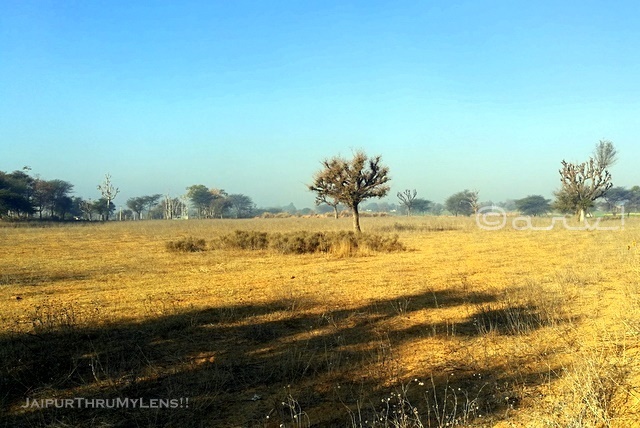
Khejri Tree | The Complete Guide
The Khejri tree is not well known even in Rajasthan because it is found in a specific area of the state. I’m not sure if people outside Rajasthan have heard about the Khejri tree. This blog intends to provide all the information a layman needs about the state tree of Rajasthan.
As a stamp collector in my teenage years, I secured a stamp issued by India Post featuring the Khejri tree. Here is a picture of the stamp with Khejri.
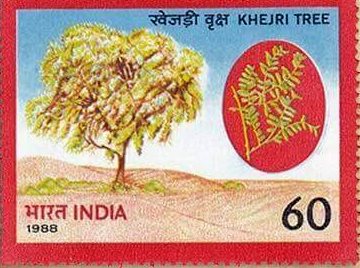
Other Names of Khejri Tree
The scientific name of the Khejri tree is Prosopis Cineraria. In India, it is also known by many other names such as Shami, Khijro, Jand, Jhand, Jat, Khar, Kanda, and Jammi depending on the region. In Rajasthan, it is called Khejri or Khejro. It is called Ghaf in the Middle East region.
Where Can One Find Khejri Tree?
Khejri is the most dominant tree in western Rajasthan; and for this exact reason, Khejri is called the state tree of Rajasthan. It was declared a state tree in the year 1982-83. The tree is also present in the Middle East region and is called Ghaf Tree. One can also find the Khejri Tree in some parts of Haryana bordering Rajasthan having similar ecological conditions.
The tree is not easy to spot in cities like Jaipur due to rapid urbanization. The Forest Department has preferred decorative and flowering trees like Gulmohar and Golden Shower Cassia trees over native species. One can surely find the Khejri tree in the suburbs and villages near Jaipur.
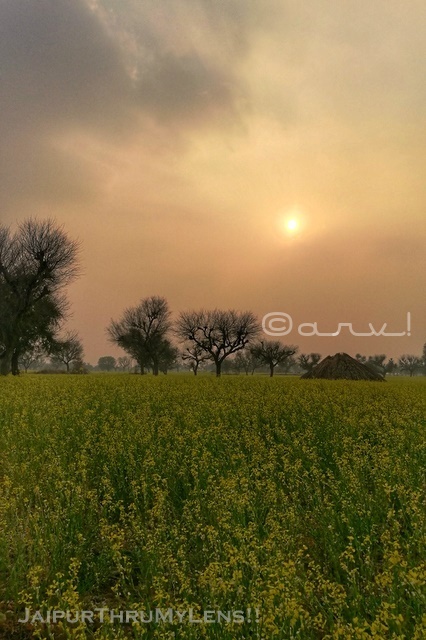
Connection OF Khejri Tree with Jaipur & Ram Bhagwan
The Khejri tree is associated with Jaipur and its history. During pre-independence, the king of Jaipur would worship the Khejri tree on the day of Dussehra. The rulers of Jaipur were Kacchawa Rajputs, the descendants of Ram Bhagwan. It is believed that Lord Ram worshipped a Khejri tree before the final battle with the King of Lanka, Ravana. In this battle, Ram Bhagwan killed Ravana. Dussehra is one of the festivals that predates Diwali and is a celebration of this win by Bhagwan Ram. The tradition of worshipping the Khejri tree in the Jaipur royal family nevertheless continues in a modified and scaled-down manner.
Fruit & Leaves
Its leaves resemble Gulmohar leaves and are similar to the ones found in other trees of the same family like Babool, Sickle bush tree, Prosopis Juliflora, or Vilayti Babool. All these belong to the Fabaceae family. Here are a few pictures of leaves from this family.
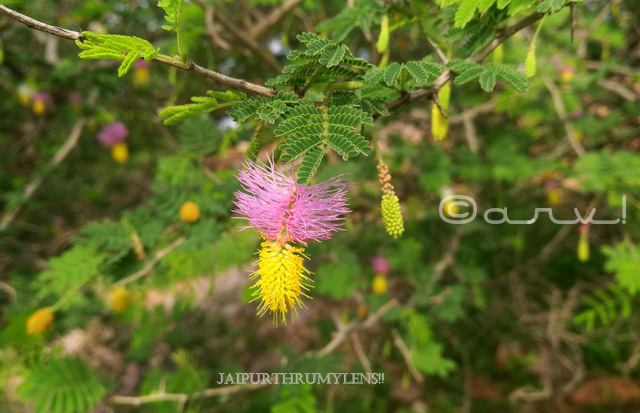

The spikes in Khejri are very small and appear as a single unit. It sheds its leaves in January and new ones appear in February-March. The fruit appears between May and July in the shape of a slender stalked pod measuring between 7-20 cm. Initially, it is green in color and later turns into a brownish shade.
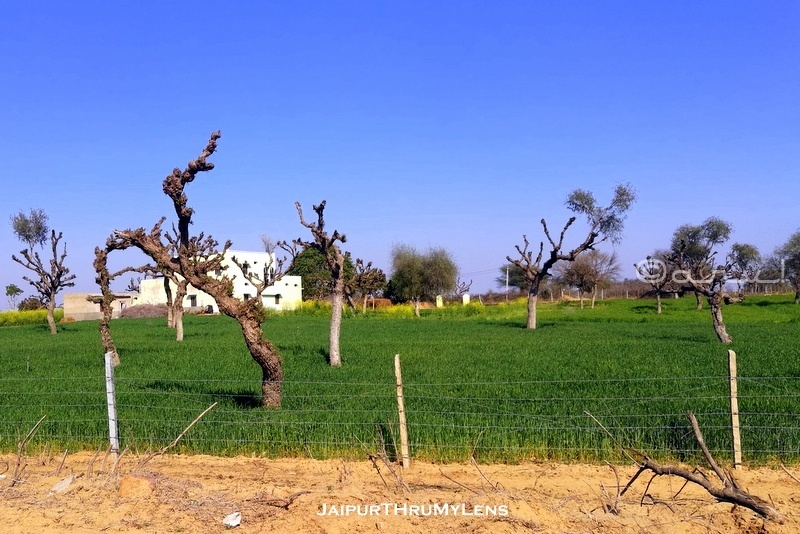
Khejri Tree Uses
It is logical to ask what is the use of the Khejri tree? The Khejri tree used to play a vital role in the economy of villages and rural areas.
- The leaves are used as fodder for cattle and therefore one observes the tree in a pruned state. A single tree provides approximately 60 kg of fodder for cattle annually. The pruning is also done to enhance tree growth at the start of the winter season.
- Apart from this, leaves also make for excellent compost.
- The wood from the tree is used for preparing food as firewood.
- Some documents suggest that the bark of Khejri was used as flour during the Famine of Rajputana in 1869. Even today the bark is used in treating many skin conditions like leprosy, boils, and itching. It is used in treating asthma in Ayurveda.
- The flowers of this tree are consumed by pregnant women along with sugar.
- The farmers are happy to have this tree in the field because its root enriches the soil, thereby helping increase the crop yield.
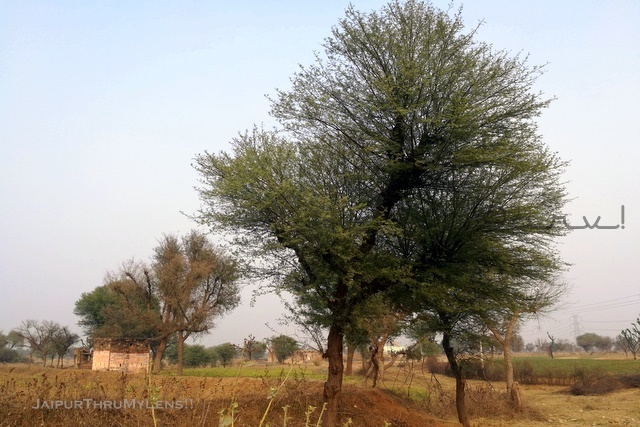
Sangri
The texture of the bark of the Kheri tree is quite similar to the one in the Neem tree – rough and cracked. The dried fruit of the tree is used as Sangri. People who appreciate Rajasthani food must have heard of Ker Sangri. While Ker grows on a bush, Sangri is derived from the Khejri tree. It fruits in summer. Sangri is a pendulous bean-like pod. These pods are used as fodder.
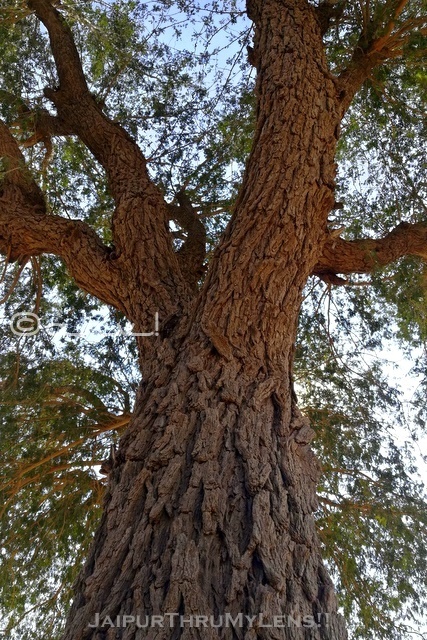
Benefits
The Khejri tree is a hardy tree that requires less care which explains why it can be easily sighted in the Thar desert. It can survive in cold & severe hot conditions with a temperature range of 5-47 C. The tree is well known for its ability to bind the soil. Its roots can attain a considerable depth in search of water sources. The Khejri tree is found in areas that receive an annual rainfall of less than 75-80 cm. This is one of the secrets to its survival in the hot and harsh climate. As per a report by the Central Arid Zone Research Institute in 2015, the Khejri tree is gradually losing ground. The area covered by this tree has come down significantly. It is said that in the past, this tree was found in Punjab. But with increased water availability, the scenario has changed. It is unlikely to be found where the annual rainfall exceeds 100 cm. Many reasons are being provided against this phenomenon but these are just theories. We still don’t know the exact cause. It wouldn’t be incorrect to say that changes in the lifestyle of the rural areas from agrarian to modern are one of the major causes. New sources of water and the availability of modern fertilizers have brought in changes bound to impact old ways. Even then, a significant landscape in Rajasthan is covered by the Khejri tree. The tree takes a long time to grow and unless we plant a lot more trees now it is unlikely the situation will change. Central Arid Zone Research Institute (CAZRI) in Jodhpur is involved in doing research on the Khejri tree.
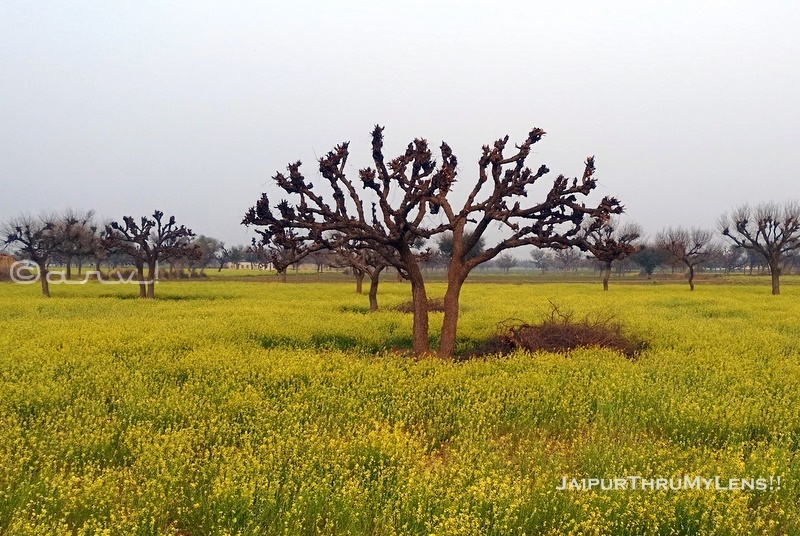
Check out other stories in the Trees of Jaipur.
Stay updated via Facebook, Twitter, Instagram
Threats & reasons for the falling population of Khejri tree
Unfortunately, the state forest department hasn’t been a catalyst in promoting this tree. We have seen the ill effects of the flawed policies adopted by the Forest Dept. during the last few years by promoting imported trees like Israeli Babool and Australian Eucalyptus. Both these trees have been counterproductive leading to more harm than gain. In the case of the latter, the soil underneath would turn infertile. Local trees support the local ecology but imported trees don’t. Khejri tree is linked with many historical events like the Chipko Movement started by Sunderlal Bahuguna in the 1970s. It is stated that this movement itself was fuelled by an event that took place in the early 1700s in Jodhpur. A king ordered the cutting of Khejri trees; the local Bishnoi community opposed the movement to retain them from felling. More details are further in this post about this event.
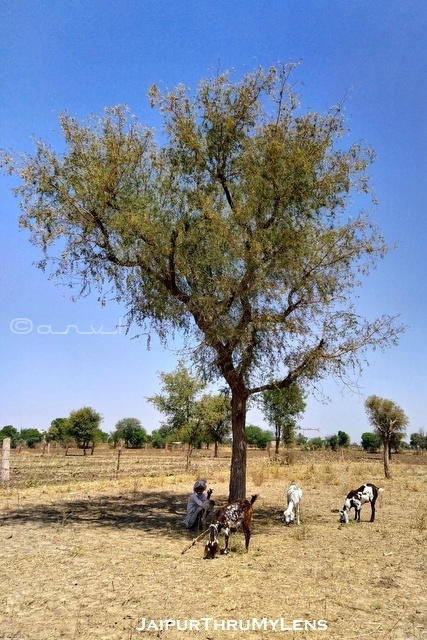
During the Chipko movement or Chipko Aandolan, people in Uttarakhand started hugging trees to stop woodcutters from cutting trees. Unfortunately, despite declaring Khejri as the state tree of Rajasthan, the government hasn’t done anything. The government did not declare cutting this tree a punishable offense nor plan for the planting of Khejri trees. During the famine of 1899, many people survived by eating the bark of this tree.
Khejarli Village Massacre and Amrita Devi Bishnoi
This event is one of the least known historical events of Rajasthan. In September 1730, in the village of Khejarli near Jodhpur, a woman along with her three daughters gave up their lives trying to save Khejri trees from felling. The woman was Amrita Devi Bishnoi from the Bishnoi community who considered Khejri as a sacred tree. The information available is the ruler of Jodhpur, Abhay Singh wanted wood from Khejri trees. Amrita Devi Bishnoi protested the felling of the trees. Along with her, other Bishnoi community members also joined in trying to protect the trees. In total, 363 people from this community were killed. This Khejadli village story of Amrita Devi Bishnoi is not known to many people. It was the first known Khejri tree movement and probably the first-ever Chipko movement in India. Today, most of us have only heard of the Chipko Movement led by Sunderlal Bahuguna in the 1970s. There is a need to inform people Khejarli Movement by Amrita Devi Bishnoi.
We need native trees like Neem, Peepal, and Dhok to name a few to preserve local ecology. What’s your view? Have you ever seen the Kheri tree? Or ever tried Ker Sangri in Jaipur or elsewhere in Rajasthan?
Read complete posts on trees found in Jaipur – Trees of Jaipur

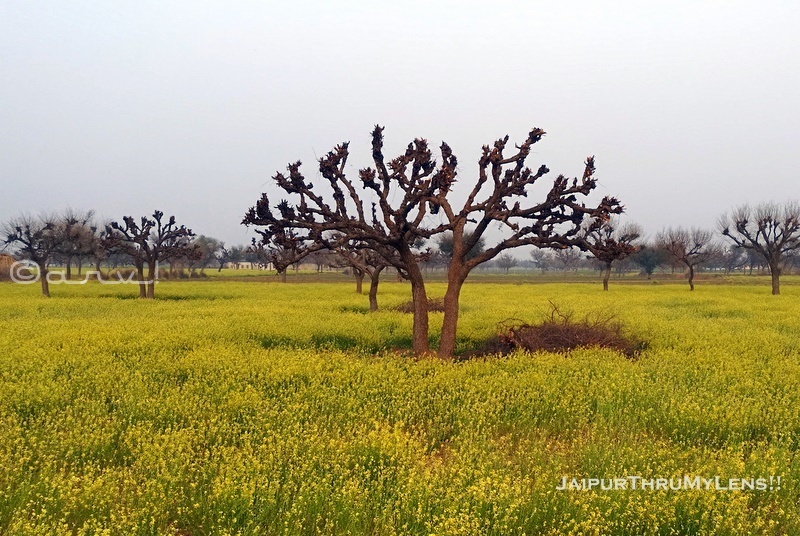
Does shami have a yellow flower or a pink and yellow flower?
LikeLiked by 1 person
Yellow.
LikeLike
Your blogs are amazing!! I just want to tell you that the pink and yellow flower is actually of Sickle Bush. Khejri has different flower. It is long and yellow 🙂
LikeLiked by 1 person
Thank you for highlighting. I have already mentioned this in a para before the picture. There are no pictures of Khejri flowers in this post.
LikeLike